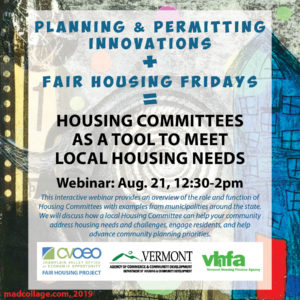Friday, August 21 – 12:30 to 2:00
Miss this webinar? Watch the recording here.
Register for this webinar
 We are in an unprecedented moment, still deep into a health crisis that has magnified existing economic and health disparities and has destabilized our country, state, and communities. Meanwhile, there is a tremendous energy for civic engagement and people are finding ways to make positive change at the local level and to support their neighbors.
We are in an unprecedented moment, still deep into a health crisis that has magnified existing economic and health disparities and has destabilized our country, state, and communities. Meanwhile, there is a tremendous energy for civic engagement and people are finding ways to make positive change at the local level and to support their neighbors.
It’s clear that safe, affordable homes are the foundation for opportunity and there is a strong correlation between health disparities and housing opportunity, especially for people of color and others in protected classes. Thousands of Vermonters were already in a precarious housing situation before covid – and tens of thousands more struggle to find affordable, and accessible homes.
A local housing committee can be an effective tool for addressing housing needs and promoting equal housing opportunity in towns and cities of all sizes. These committees can take the form of a municipally-supported committee, subcommittee of the planning commission, resident advocacy group, housing discussion meet-up, or any other group that seeks to support or change the quality, quantity, affordability, and/or inclusiveness of housing in a community.
This interactive webinar provides an overview of the role and function of Housing Committees with examples from municipalities around the state. We will discuss how a local Housing Committee can help your community address housing needs and challenges, engage residents, and help advance community planning priorities.
This webinar is co-presented by the Vermont Department of Housing & Community Development (DHCD), Vermont Housing Finance Agency, and the Fair Housing Project of CVOEO as part of DHCD’s Community Planning and Revitalization Division Planning & Permitting Innovations series, which is focused on tools to help communities adapt to the rapidly changing world.


